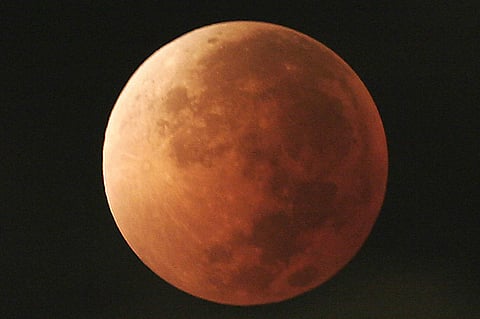

The total lunar eclipse, the most dramatic and visually appealing type of lunar eclipse, will occur on Wednesday, after a period of 36 years.
The eclipse will display a triple line-up of blue moon, supermoon and total lunar eclipse.
The phenomena is very rare as there hasn't been a celestial lineup like this since 1982. There will not be any such occurence until 2037.
A blue moon refers to the second full moon in a month, which occurs every two years and eight months, lunar eclipses occur at least twice a year and supermoons can appear four to six times a year.
A total lunar eclipse or blood moon known for its reddish tinge has the moon completely bathed in Earth's shadow, called the umbra. During the eclipse, the moon turns into a deep shade of red.
The eclipse will be visible best in the western half of the U.S. and Canada before the moon sets early Wednesday morning, and across the Pacific into Asia as the moon rises Wednesday night into Thursday.
The US East Coast will be out of luck as the moon will be setting just as the eclipse gets started. Europe and most of Africa and South America also will pretty much miss the show.
The moon will actually be closest to Earth on Tuesday, just over 223,000 miles (359,000 kilometers). That's about 1,500 miles (2,400 kilometers) farther than the supermoon on January 31. Midway through Wednesday's eclipse, the moon will be even farther away 223,820 miles (360,200 kilometers) but still within unofficial supermoon guidelines.
Just like the total solar eclipse in the U.S. last August cooled the Earth's surface, a lunar eclipse cools the moon's surface. It's this abrupt cooling, from the heat of direct sunlight to essentially a deep freeze that researchers will be studying.
Totality will last more than an hour and NASA has been planning to provide a live stream of the moon from telescopes in California and Arizona, beginning at 5:30 a.m. EST.
(with inputs from Associated Press)